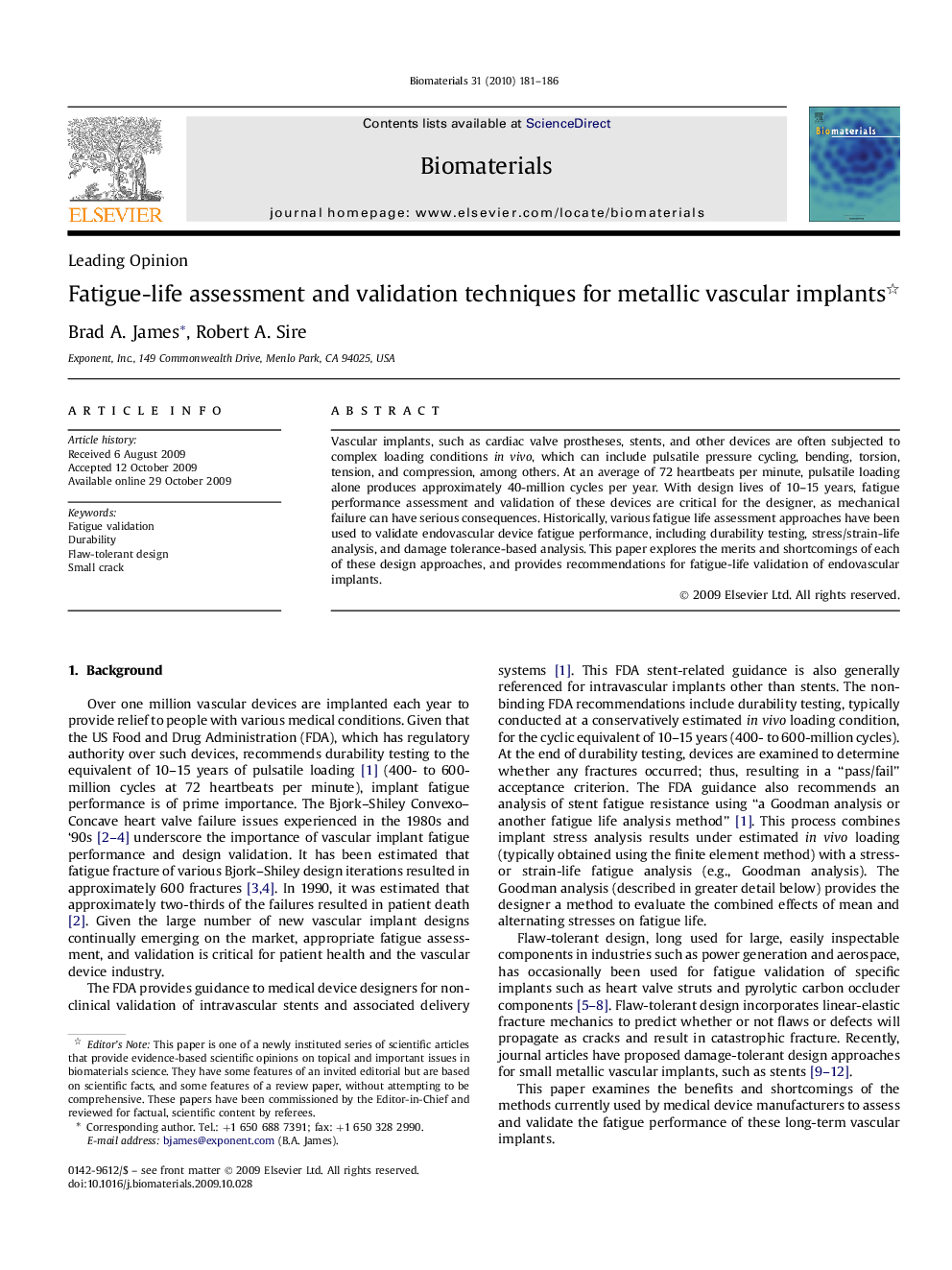| Article ID | Journal | Published Year | Pages | File Type |
|---|---|---|---|---|
| 8618 | Biomaterials | 2010 | 6 Pages |
Vascular implants, such as cardiac valve prostheses, stents, and other devices are often subjected to complex loading conditions in vivo, which can include pulsatile pressure cycling, bending, torsion, tension, and compression, among others. At an average of 72 heartbeats per minute, pulsatile loading alone produces approximately 40-million cycles per year. With design lives of 10–15 years, fatigue performance assessment and validation of these devices are critical for the designer, as mechanical failure can have serious consequences. Historically, various fatigue life assessment approaches have been used to validate endovascular device fatigue performance, including durability testing, stress/strain-life analysis, and damage tolerance-based analysis. This paper explores the merits and shortcomings of each of these design approaches, and provides recommendations for fatigue-life validation of endovascular implants.
